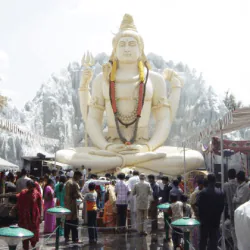Have you ever wondered if there are bears in Colorado? For many people, the thought of wild bears roaming the mountains and forests of Colorado is both exciting and terrifying. The truth is, there are bears in Colorado, and they’ve been here for centuries! In this blog post, we’ll explore the myths and realities of Colorado bears, providing all the information you need to know about these majestic creatures. So grab a cup of coffee, get comfortable, and join us as we take a closer look at Colorado Bears: Myth or Reality?
The History of Bears in Colorado
Bears have a long and fascinating history in the beautiful state of Colorado. Dating back to the early settlement of the region, bears have roamed the vast mountainous landscapes for centuries. Native American tribes such as the Ute, Apache, and Arapaho have respected and coexisted with these magnificent creatures for generations.
However, as European settlers arrived in the late 1800s, the relationship between humans and bears began to change. Bears were often seen as a threat to livestock and were hunted to protect these valuable assets. As a result, their population dwindled, and by the early 1900s, bears were on the brink of extinction in Colorado.
Fortunately, conservation efforts and hunting regulations were put into place in the following decades. This allowed the bear population to slowly recover, and by the 1970s, bears were once again a common sight in Colorado’s wilderness.
Today, bears play a vital role in the state’s ecosystem, contributing to seed dispersal, controlling prey populations, and influencing vegetation patterns. Their presence is a testament to the success of wildlife management and the importance of preserving their natural habitats.
So, if you’re wondering if bears truly exist in Colorado, the answer is a resounding yes! These majestic creatures have not only left a mark on the state’s history but continue to thrive in its stunning landscapes. It is a privilege to share the land with these powerful beings, and as visitors and residents alike, we must strive to respect their presence and ensure their protection for generations to come.
Types of Bears in Colorado
Colorado is home to three types of bears: black bears, grizzly bears, and hybrid bears. Black bears are the most common and widely distributed bears in the state. Despite their name, black bears can come in various colors, including brown, cinnamon, and even blonde. They are known for their adaptability and can be found in a range of habitats, from forests to open meadows.
Grizzly bears, also known as brown bears, were once abundant in Colorado, but they are now considered extinct in the state. The last recorded sighting of a grizzly bear in Colorado was in the 1970s. However, there have been occasional reports of grizzlies crossing over from neighboring states.
Hybrid bears, also called “grizzly-black bear hybrids,” are a rare occurrence in Colorado. These bears are the result of mating between a grizzly bear and a black bear. While sightings of hybrid bears are uncommon, they have been reported in some areas of Colorado.
It’s important to note that although black bears are commonly found in Colorado, they are often mistaken for grizzly bears due to their varying coloration. However, grizzly bears are no longer considered to be present in the state, and any sightings should be reported to the appropriate authorities for verification.
Understanding the types of bears in Colorado is crucial for promoting coexistence and ensuring the safety of both humans and bears in their shared habitat.
Bear Habitat in Colorado
Colorado offers diverse and vast landscapes that serve as an ideal habitat for bears. The state’s varying elevations, rugged mountains, and abundant vegetation make it a perfect home for these magnificent creatures. From the ponderosa pine forests to the alpine meadows, bears can be found thriving in different habitats across the state.
One of the primary bear habitats in Colorado is the montane zone, which includes the foothills and lower mountain slopes. This region provides a mix of vegetation, including oakbrush, aspen, and mountain shrubs, which are rich food sources for bears. Additionally, the dense forests and rocky outcroppings in this area provide suitable dens for bears to hibernate during the winter months.
The subalpine zone, found at higher elevations, also offers an excellent bear habitat. Here, spruce-fir forests and vast meadows support an array of berry-producing shrubs, such as huckleberries and serviceberries, which are vital for the bears’ diet. Bears in this zone often forage for food in these meadows during the summer and fall seasons.
Furthermore, Colorado’s extensive wilderness areas, such as the San Juan Mountains and the Rocky Mountain National Park, offer abundant natural resources for bears. These areas have ample water sources, including rivers, streams, and high-altitude lakes, ensuring bears have access to essential hydration.
Overall, Colorado’s diverse ecosystems and vast landscapes provide an ideal habitat for bears. It is crucial for visitors and residents alike to respect these creatures’ natural environment and understand the necessary precautions to take to ensure a safe coexistence with Colorado’s bear population.
Bear Population in Colorado
The bear population in Colorado has been a topic of interest and concern for both residents and visitors alike. Over the years, Colorado has seen an increase in the bear population, particularly black bears.
Black bears are the most common type of bear found in Colorado, with an estimated population of over 20,000 bears in the state. Their population has been steadily growing due to several factors, including ample food sources and protected habitat areas.
However, it’s important to note that while black bears are thriving in Colorado, grizzly bears have not been spotted in the state for several decades. Grizzly bears were once found in Colorado but were extirpated due to hunting and habitat loss. There have been discussions and efforts to reintroduce grizzly bears in certain areas, but it remains a controversial topic.
The increase in the black bear population in Colorado has led to an increase in bear-human encounters. As their natural habitat continues to overlap with residential areas, it’s crucial for both residents and visitors to be bear-aware. This includes securing trash cans, storing food properly, and understanding how to safely handle encounters with bears.
Bear Safety and Encounters in Colorado
Colorado is home to a variety of bear species, including black bears and occasionally grizzly bears. While encountering a bear in the wild can be a thrilling experience, it’s important to prioritize safety and understand how to react in these situations.
To ensure bear safety in Colorado, it’s crucial to remember a few key guidelines. Firstly, always keep a safe distance from bears. Maintain at least 100 yards of space between you and any bear you come across. This distance will help minimize the chance of a dangerous encounter. It’s also essential to avoid surprising a bear. Make your presence known by talking, clapping, or making noise while hiking. Bears typically prefer to avoid humans, and giving them an opportunity to do so can prevent a potentially dangerous encounter.
If you do find yourself in a close encounter with a bear, it’s important to remain calm. Back away slowly while facing the bear and avoiding direct eye contact. Never turn your back on the bear or run, as this can trigger their predatory instincts. Instead, make yourself look larger by raising your arms and standing tall.
Bear encounters can be unpredictable, but being prepared and knowledgeable about bear behavior and safety guidelines can greatly reduce the risk of negative interactions. Remember, respecting bears’ habitat and being mindful of their presence in Colorado can help ensure both their safety and ours.




